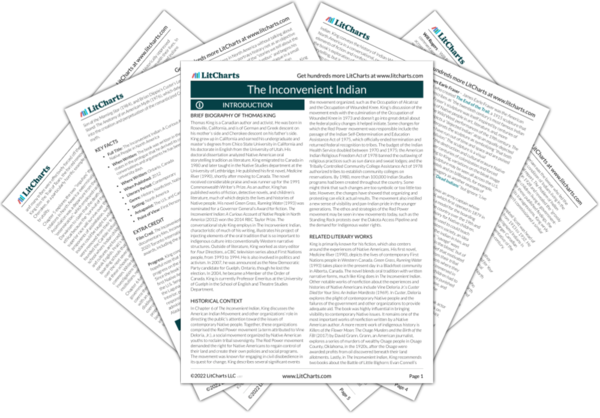In this story, King addresses another contentious issue regarding Native land rights and tribal sovereignty: the right for tribes to exercise hunting and fishing practices beyond the regulations enforced for U.S. Citizens. The Treaty of Medicine Creek afforded Indians fishing rights in exchange for much of the Nisqually peoples’ farmland. The conflict that ensued due to Nisqually chief Leschi’s dissatisfaction with the treaty was a controversial issue even at the time. Leschi was tried twice before he was sentenced to death—his first trial ended in a hung jury. In 2004, a court in Pierce County, Washington, ruled to posthumously exonerate Leschi, arguing that the chief should not have been executed for his legitimate role in the Puget Sound War. While this is a nice symbolic gesture, it's yet another example of America’s preference for Dead Indians over Live Indians. Only after Leschi’s death could the court deem him worthy of respect and adequate legal consideration; in life, he was just another “inconvenient” Indian.
